Copyright © 2018 - All Rights Reserved - Domain Name
Template by OS Templates
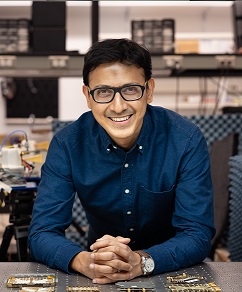
Kaushik Sengupta
Dr. Sengupta joined the Department of Electrical and Computer Engineering, Princeton University, Princeton,
NJ, USA, as a Faculty Member, in 2013, where he is currently an Professor. His current research interests include novel chip-scale arhcitectures for intelligent sensing and communication for a wide range of emerging applications.
Dr. Sengupta received the DARPA Young Faculty Award in 2018, the Bell Labs Prize in 2017, the Young Investigator Program Award from the Office of Naval Research in 2017, the E. Lawrence Keys, Jr. Emerson Electric Co. Junior Faculty Award from the Princeton School of Engineering and Applied Science in 2018, and the Excellence in Teaching Award in 2018 nominated by the Undergraduate and Graduate Student Council in the Princeton School of Engineering and Applied Science. He was a recipient
of the Prime Minister Gold Medal Award from IIT Kharagpur in 2007, the Charles Wilts Prize in 2013 from Electrical Engineering at Caltech for the best Ph.D. thesis, and the inaugural Young Alumni Achievement Award from IIT Kharagpur in 2018. He was a co-recipient of the IEEE RFIC Symposium Best Student Paper Award in 2012 and the 2015 Microwave Prize from the IEEE Microwave Theory and Techniques Society. He has served as the Sub-committee chair on Emerging Technologies in IEEE Custom Integrated Circuits Conference (CICC), in the technical program committee in IEEE International Microwave Symposium, and has previously served as Guest Editor in IEEE Journal of Solid-State Circuits. He is a member of the MTT-4 Committee on Terahertz technology and served as Distinguished Lecturer for the IEEE Solid-State Circuits Society from 2019 to 2020. He is currently serving as Distinguished Lecturer for the IEEE Microwave Theory and Techniques from 2021 to 2023. He is a recipient of the 2021 IEEE Microwave Theory and Techniques Outstanding Young Engineer Award and the 2022 IEEE Solid-state Circuits New Frontier Award. He currently serves as the co-chair of the IEEE Solid-state Directions Sub-committee and, and as a technical advisor for the wireless start-up company Guru.
Saurabh Sinha Saurabh Sinha, PhD(Eng), Pr Eng, FIEEE, FSAIEE, FSAAE, MASSAf. Prof Sinha obtained his B. Eng (with distinction), M. Eng (with distinction), and Ph.D. degrees in Electronic Engineering from the University of Pretoria (UP). As an established researcher, rated by the National Research Foundation (NRF), he has authored or co-authored over 140 publications in peer-reviewed journals and at international conferences. Prof Sinha served UP for over a decade; his last service being as Director of the Carl and Emily Fuchs Institute for Microelectronics, Department of Electrical, Electronic and Computer Engineering. On 1 October 2013, Prof Sinha was appointed as Dean: Faculty of Engineering and the Built Environment (FEBE) at the University of Johannesburg (UJ). As of 1 Dec. 2017, Prof Sinha is the UJ Deputy Vice-Chancellor: Research and Internationalisation. Among other leading roles, Prof Saurabh Sinha also served the IEEE as a Board of Director and IEEE Vice-President: Educational Activities.
In 2022, Prof Sinha became a recipient of the U.S. Fulbright Visiting Research Scholar Program (VRSP). With the topic ``Last-Mile Telecommunications: Millimeter-Wave Integrated Circuits,'' he spent a research sabbatical term (Dec. 2022-Mar. 2023) at Princeton University.
Xiaolong Huang Xiaolong Huang received his Ph.D. in Electrical Engineering from Shanghai Jiao Tong University in 2019 under the guidance of Prof. Junfa Mao. During his doctoral studies, he was a recipient of the Best Paper Award of 2019 National Conference on Microwave and Millimeter Waves of China. He received his B.S. and M.S. in electromagnetic field and microwave techniques from University of Electronic Science and Technology of China in 2006 and 2010, respectively. He joined industry as a handset PA design engineer in 2019 and became a senior engineer in 2020. He joined Prof. Sengupta's lab in August 2021. He is integrated in high frequency circuit design and systematic integration.
Zijian Shao Zijian received the B.S. degree in electronic engineering from the University of Electronic Science and Technology of China, Chengdu, China, in 2015 and the Ph.D. degree in electrical engineering from Shanghai Jiao Tong University, Shanghai, China, in 2021. In Jan. 2022, he joined the IMRL as a Postdoctoral Research Fellow. He is a recipient of the Honorable Mention Award in the student paper contest of International Conference on Microwave and Millimeter Wave Technology 2019. He has authored over ten journal articles and holds five granted patents. His current research interests include electromagnetics, prior-knowledge-guided RF synthesis, and software defined and cognitive radios.
Hao Tang
Hao Tang joined the IMRL Lab in 2018. He is interested in developing new architectures for point-of--care diagnostics and chip-scale platforms for cellular assays. In particular, he has been interested in high throughput, pneumatic-free, cytometry with high specificity and sensitivity.
Zheng Liu
Emir Ali Karahan Emir is interested in new forms of design techniques for electromagnetic structures and their RF interfaces, and RF systems in general once we remove the limitations of traditional intuition-based optimization approaches and probing fundamental limits of their performances. Emir is interested in exploring deep learning methods and inverse design in mmWave ICs. He received the Yan Huo*94 fellowship in 2022.
Sherif Ghozzy Sherif Ghozzy received his bachelor and master degrees in Electrical Engineering from Ain Shams University, Egypt. He has 4 years of industrial experience working on power electronics, analog and AMS circuit designs. His research interests include RF and analog circuits design, microwave engineering, machine learning, optics and photonics circuits. He is interested in novel, energy-efficient THz receivers and sensors.
Tyler Blundo Tyler received his B.S.E. in Electrical Engineering from Arizona State University in 2020. He joined Professor Sengupta's research group in the Spring of 2021. His research interests include the novel applications of antennas and radiating structures, and their integration with electronic systems in the pursuit of motivating the next generation of wireless technology. He is interested in reconfigurbale reflectarrays and metasurfaces, broadly for resilient networks and computational imaging.
Muhamad Allam Muhamed Allam received his B.S. degree in Electrical Engineering from Ain Shams University in Egypt. He has 4 years of industrial experience working in Analog-Mixed Signal circuits design. Muhamed also received his M.S. degree from Ain Shams University, specializing in High-Speed Serial Links receivers. His research interests are in RFIC design, mm-Wave and THz circuits design, and machine learning.
Wenkai Fang Wenkai Fang received his B.A.S. degree from University of Waterloo with distinction in 2022. He had several internships in digital IC design. He joined Professor Sengupta's research group in Spring 2023. His research interests are high frequency wide band circuits and analog frontend design.
Jonathan Zuou Jonathan received his B.S.E.E from the University of Washington in 2022, where he researched full-duplex transceivers under Professor Chris Rudell. He joined Professor Sengupta's group in Spring 2023, and is currently focusing on reinforcement learning for amplifier design. His broad research interests include mmWave & THz ICs, and machine-learning driven circuit design.
Yiming Yu (2020-21) Yiming Yu received the B.S. and Ph.D. degrees in the major of electronic engineering from the University of Electronic Science and Technology of China (UESTC), Chengdu, China, in 2012 and 2017, respectively. Since 2018, he has been a lecturer with UESTC. He joined Prof. Sengupta's lab as a visiting fellow in January 2020. His research interests include modeling of on-chip devices, antenna array, silicon based mm-Wave integrated circuits, and on-chip phased-array transceiver front end.
Mohamed Serry (2019-2020) Mohamed Serry received his BSc in mechanical engineering from Ain Shams University in 1999, MSc from University of Alberta in 2003, and PhD from University of Toronto in 2007. In 2008, he received a fellowship by the Japan Society for the Promotion of Science to work as a postdoctoral fellow at the Department of Microengineering, Kyoto University, Japan. In 2009, Serry joined the Microfabrication Group at YJSTRC as part of the collaborative research project with King Abdullah University of Science and Technology (KAUST). He is intersted in bio-Mems and applications in organs on chip and analytical microsystems. He spent his sabbatical in IMRL in 2019, and for a short trip in 2022.
Suresh Venkatesh (2018-2022) Suresh received his PhD in Electrical & Computer Engineering from University of Utah in 2017 under the guidance of Prof. David Schurig. He received his M.S in Electrical & Computer Engineering from North Carolina State University in 2010. His PhD dissertation received the ECE Outstanding Dissertation Award, 2016. He was also a Research Project Assistant at Raman Research Institute, Bangalore during 2007-08, where he worked on 10.4 m millimeter-wave radio telescope. His research interests are in electromagnetics, metamaterials, antenna design, and transformation optics design. At IMRL, he was involved in THz metasurfaces, spatio temporal arrays for security, origami based imaging surfaces and other projects. He is currently a faculty member in ECE at North Carlonia State University.
Tushar Sharma (2018-19) Tushar graduated with his doctorate from iRadio Lab, Schulich School of Engineering, University of Calgary, Canada in 2018 under supervision of Prof. Fadhel Ghannouchi. Tushar led several works on InP-based mm-Wave power amplifiers and load-modulated balanced mmWave CMOS PAs during his time at IMRL.
Jesus Maldonado (2019-21) Jesus received his Ph.D. in Biotechnology from Catalan Institute of Nanoscience and Nanotechnology, Universitat Autonoma de Barcelona in 2017 under supervision of Prof. Laura Lechuga. He received his M.Sc. in Micro and Nanosystems in Research Center on Micro and Nanotechnology from Veracruz University. In 2018, Jesus joined Microtechnology and Embedded Systems Laboratory at Computing Research Center from IPN as research scientist. His current research interests include Lab-on-a-chip biosensing, Nano-Biotechnology, Bio-Mems, and bioanalytical applications.
Xinyu Zhou (2020-21) Xinyu received his Ph.D. degree in the department of electrical engineering, City University of Hong Kong, Hong Kong in 2018. During his doctoral studies, he was the recipient of the first-place award of international microwave symposium (IMS) high-efficiency power amplifier student design competition in 2017 and the recipient of the second-place award in the same student design competition in 2018. In the year 2018-20, He joined the department of electrical engineering, City University of Hong Kong as a postdoctoral fellow to focus on the base station power amplifier design (including the sub-6GHz and mm-wave band) based on gallium nitride (GaN) technology. He has authored and coauthored over 30 refereed publications, 1 U.S. patent, and 7 pending U.S. patents. His current research interests include high-efficiency and high-linearity Doherty power amplifiers, waveform engineering, mm-wave PA architectures, and microwave circuits.
Hooman Saeeidi
Hooman Received his B.S. degree in electrical engineering from the Sharif University of Technology, Tehran, Iran in 2017 and he joined Prof. Sengupta's Lab in February 2018. His research interests include electromagnetics, mm-wave, THz circuits, signal processing, and integrated circuits for high data rate communication systems.
Awards: Best student paper award (2nd prize) in IRMMW-THz in 2021, the IEEE Pre-doctoral Acheivement Award in IEEE Solid-State Circuits Society, Princeton Electrical Engineering Early Career Award, the Princeton ECE Department Teaching Award, the ECE Department Graduate Student award for Excellence in Service in 2021, the Yan Huo* 94 fellowship, and Analog Devices Outstanding Designer Award in 2019.
Chengjie Zhu Chengjie graduated from Georgia Tech Electrical Engineering department and joined prof. Kaushik Sengputa's research group in Spring 2017. He was awarded twice with PURA undergraduate research award and had a few publications during his undergraduate years, including TBIOCAS, VLSI Tech Cir. Symp. and BMES. His current research focuses on Bio-optical sensing platform based on CMOS process. In particular, he is interested in developing miniaturized and wireless bio-assay platforms for in-vitro and in-vivo applications.
Xuyang Lu Xuyang Lu received his BS degree in Electrical Engineering from Rice University in 2014, during which he was invited to join the Phi-Beta-Kappa National Society and IEEE Eta-Kappa-Nu Honor Society. He joined Prof. Sengupta's lab in February 2015. In his Ph.D., Xuyang worked on a gamut of interesting problems ranging from physically secure wireless links to reconfigurable mm-Wave front-ends and antennas, to THz metasurfaces, and THz systems
Chandrakanth Reddy Chapiddi Chandra Kanth received his B.Tech degree in Electronics and Electrical Communication Engineering from Indian Institute of Technology, Kharagpur in July,2013. He joined the Prof. Sengupta's lab in February 2014. In his Ph.D., Chandrakanth presented a mathametical approach towards mm-Wave power amplifiers in silicon proposing a generalized multi-port approach to enable simultaneously bradband, back-off efficienct and VSWR-tolerant mm-Wave front-ends.
Lingyu Hong Lingyu Hong received his BS degree in Physics from Peking University in 2012, during which he researched in Nanophotonics and Plamsonics and received Peking University Academic Excellence Reward and various scholarships. He joined Prof. Sengupta's Lab in May 2013. He is interested in the study, research, and implementation of interdisciplinary knowledge in Photonics, Electronics and others for lab-on-chip systems, specifically for biomedical applications.
Xue Wu Xue Wu received his BS degree in Electronic Engineering from Tsinghua University in 2012. During his undergraduate studies, he received the National Scholarship of China in 2009, "Friend of Tsinghua" Scholarship in 2010 and Academic Scholarship of Tsinghua University in 2011. He is a graduate student at Princeton University and joined Prof. Sengupta's Lab in February 2013. His research interests lie in exploring techniques for realizing innovative silicon-based integrated systems in the mmWave and THz frequency range.
Manya Kapoor
Manya Kapoor is a senior from India in the Electrical and Computer Engineering Department. Her sub-concentration is the Biomedical Engineering track and she is pursuing certificates in Engineering Biology and Quantitative and Computational Biology. Her research interests include microfluidic sensors and point-of-care diagnostics, imaging, genomics, and phase separation. Along with Jackie Chu, she is completing her thesis on identifying cells using electrochemical impedance spectroscopy in the Sengupta Lab. When not in lab, Manya can be found dancing, songwriting, or TAing some of her favourite courses.
Jackie Chu
Jackie Chu is a member of the class of 2022, receiving a B.S.E in Electrical and Computer Engineering with a concentration in Biomedical Engineering. Her research interests range from imaging to biomedical devices. Her thesis with Manya Kapoor, advised by Prof. Sengupta, works with identifying cells based on electrochemical impedance spectroscopy. She also was a TA for ECE206: Contemporary Logic Design. In her free time, she was a part of Princeton's Asian American Student Association (AASA) and enjoys playing a variety of puzzles.
Clare Cook Clare Cook graduated with a BSE in Electrical Engineering from Princeton in June 2020. She completed her junior independent work with Professor Sengupta and fellow undergraduate Dan Sturm on mm-wave computational based imaging, and her senior thesis on fluorescent microscopy for in-vivo imaging of cervical cancer cells.
Dan Sturm Dan graduated from Princeton in 2019 and worked with the IMRL to develop a mmWave MIMO imaging system with non-planar antenna configurations. He is currently working at Apple and plans to do a PhD in electrical engineering in the near future.
Anna Broome Anna Broome will graduate with a B.S.E. in Electrical Engineering from Princeton in June 2018. Her research interests include design and analysis of high frequency circuits and systems for high-impact applications. She is completing her senior thesis under the supervision of Professor Sengupta, designing the antenna and front-end detector of a silicon-based terahertz imaging system.
Daniel Stanley is planning to graduate Princeton with a BSE degree in electrical engineering in 2018. He is working with Professor Sengupta, as well as fellow undergrads Anna Broome and TJ Smith, THz camera for his senior thesis project. He plans to continue pursuing his research interests, which range from integrated circuits to robotics, in graduate school next year. TJ Smith will graduate from Princeton with a BSE in Electrical Engineering in 2018. He is currently working with Anna Broome and Daniel Stanley on the design and layout of a silicon-based THz camera. His research interests include analog and digital circuits, computer architecture, and systems programming. Rita Fang graduated in 2017 from E.E. at Princeton University and worked with Prof. Sengupta on powering in-vio biosensors exploiting gastric juice as the electrolyte. Weimen Li graduated in 2017 with B.S.E. in E.E. from Princeton University. He was co-advised by Prof. Sengupta (primary adviser: Alex Nectow, Princeton Nueroscience Institute) on RFID-Based Feed Tracking System and Embedded Infrared Camera System for Tracking Mice to investigate population neural dynamics Victor Ying will graduate with a B.S.E. in Electrical Engineering from Princeton in June 2016. His research interests range from device physics and circuits to formal modeling and verification of computer systems. His activities on campus include providing peer academic advising for underclassmen and being a TA for ELE 206: Contemporary Logic Design. Liam Kelly is a senior BSE candidate in Electrical Engineering at Princeton University, where he is a member of Tau Beta Pi. His expected graduation date is May 2016. He joined Prof. Sengupta's lab in September 2015 where he is doing a senior thesis on wireless power transfer over long distances. His research interests include embedded system design and analysis with a focus on communications between various devices.
Huaixi Lu is an undergraduate student at Peking University who will receive a BS in Electrical Engineering in 2018. His research interests lie in analog circuit design. He worked under Prof. Sengupta's guidance over the summer of 2017 through ISIP program and received the Chen Shouren Scholarship, the best scholarship for summer research in Peking University. He was involved in chip testing and his main work included designing a PCB for imager chip and several codes for measurement program. Huaixi intends to attend graduate school and pursue a Ph.D in circuit design. Thomas Look is an M.S. Physics student at California State University, Northridge where he has received the Graduate Fellowship for Outstanding Research Promise in Science and Mathematics and the Association of Retired Faculty Memorial Thesis/Project Award. His interests are in quantum computation, strongly correlated electrons, quantum thermalization, many-body localization, and topological phases of matter. He worked for Professor Sengupta over the summer of 2017 through the PRISM/PCCM REU Program and built a framework for simulating MIMO antenna arrays with tunable anisotropic radiation patterns in an indoor multipath environment. He plans to pursue a Ph.D in Physics after obtaining his master's degree. Swathi Chandrika is attending South Brunswick High School and will graduate in 2017. In the summer of 2016, she worked under Professor Sengupta through the MIRTHE REU program. During that time, she worked on creating a GUI in MATLAB to analyze data from a biosensor. Swathi is a captain of her school's Science Olympiad team and is on its Varsity tennis team. In college, she plans to pursue her interests in both applied physics and engineering. Matthew Cavallaro is an undergraduate student at The Cooper Union who will receive a BS in Electrical Engineering in 2018. His fields of interest include circuit design, semiconductors, energy and sustainability. He worked for Professor Sengupta over the summer of 2016 through MIRTHE REU program. His project involved designing a compact PCB and interface for an integrated CMOS biosensor. Some of his hobbies include hiking, exercise, playing the guitar or piano, skatboarding, tennis, and soccer. Matthew intends to attend graduate school and pursue a Ph.D in his field of interest.
Professor,
Princeton University.
B.Tech and M.Tech (Dual degree) in Electronics and Electrical Communication Engg.,
Indian Institute of Technology, Kharagpur, 2007.
M.S., Electrical Engineering, Caltech, 2008.
Ph.D., Electrical Engineering, Caltech, 2012.
Visiting Faculty
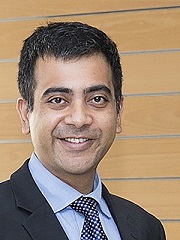
Deputy Vice-Chancellor, University of Johannesburg
Post-doctoral Scholars
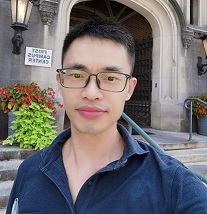
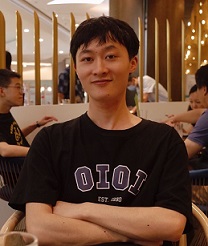
Current Ph.D. Students
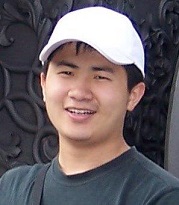
B.S. in Electrical Engineering, 2016
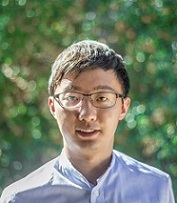
B.S. in Electrical Engineering, Peking University, 2013.

B.S. in Electrical Engineering, Bilkent, Turkey, 2019.
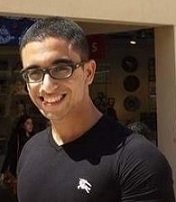
B.S. and M.S. in Electrical Engineering, Ain Shams University.

B.S. in Electrical Engineering, Arizona State University.
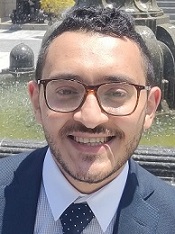
B.S. and M.S. in Electrical Engineering, Ain Shams University.
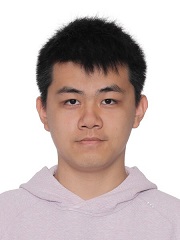
B.A.S. in Electrical Engineering, University of Waterloo

B.S. in Electrical Engineering, University of Washington
Lab Alumni
Prior Visiting Faculty
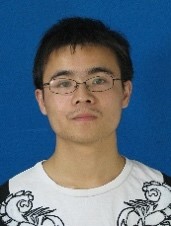
Ph.D. in Electronic Engineering, University of Electronic Science and Technology of China, 2017.
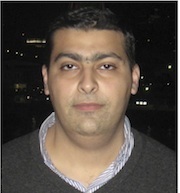
Ph.D., University of Toronto, 2007.
Post-doctoral Scholars

Ph.D., University of Utah, 2018.
Assitant Professor, ECE, North Carolina State University, 2018.

PhD., University of Calgary, 2018.
Renesas Electronics. San Diego, California, United States.

Ph.D., Biotechnology from Catalan Institute of Nanoscience and Nanotechnology, Spain, 2017.
Post-doctoral scholar, Yale University.
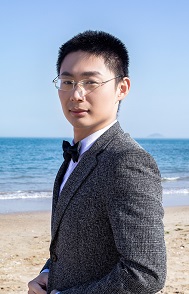
Ph.D. in Electrical Engineering, City University of Hong Kong, Hong Kong, 2018.
Post-doctoral scholar, Stanford University.
PhD Students
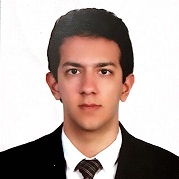
B.S. in Electrical Engineering, Sharif University of Technology, 2017.
Papers: Nature Electronics (2020), IEEE ISSCC 2020, IEEE ISSCC 2021, (Invited) IEEE JSSC 2021, IEEE JSSC 2022, IEEE RFIC 2021, IEEE Antennas and Propagat Mag 2022, (Inivted) IEEE ESSCIRC 2022, IEEE IRMMW-THz 2021, IEEE WAMICON 2022, IEEE CICC 2019, IEEE IMS 2020, IEEE CICC 2019, IEEE ECOC 2020, CLEO 2021 (3 papers), IEEE ANTEM 2021 (2 papers)
Patents: US Patent filed on THz metasurfaces and THz localization.
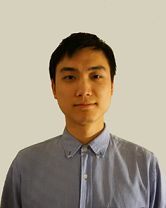
B.S. in Electrical Engineering, Georgia Tech, 2017,
PhD, ECE, Princeton University, 2022.
Ferric Inc., NYC.
Awards: Princeton School of Engineering and Applied Sciences TA award, and Analog Devices Outstanding Designer Award in 2018.
Papers: IEEE ISSCC (2021), (Invited) IEEE T.BioCAS (2022), IEEE ISSCC 2020, IEEE Sensors 2022, IEEE IMS 2019, IEEE VLSI Symp. 2020, IEEE T.BioCAS (submitted), IEEE O.JSSC (2021), IEEE JSSC (2022), Hilton Head workshop (2022), IEEE EMBC (2022)
Patents: US Patent filed on CMOS driven microfluidics
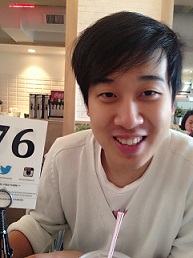
Xuyang Lu B.S. in Electrical Engineering, Rice University, Houston, Texas, 2014.
Ph.D., Electrical Engineering, Princeton, 2020.
Assistant Professor, University of Michigan-Shanghai Jiaotong Joint University, 2020-present
Papers: Nature Electronics (2020), Nature Electronics (2021), IEEE ISSCC 2021, IEEE ISSCC 2020, IEEE ISSCC 2017, Advanced Science (2022), IEEE JSSC (submitted), IEEE JSSC 2021, Two papers in IEEE JSSC (2020), IEEE O.JSSC (2021), IEEE JSSC (2018), IEEE Antennas and Propagat Mag (2022), IEEE RFIC (2022), (Invited) IEEE ESSCIRC (2022), IEEE Antem (2021), IEEE IRMMW-THz (2021), IEEE Wamicon (2021), ACM workshop (2021), IEEE ECOC (2020), ACM Nanocom (2020), IEEE APS/URSI (2020), IEEE IWMTS (2020), (Invited) OSA Optical Sensors and Sensing Congress (2020), (Invited) IEEE ICC (2020), Two papers in IEEE CICC (2019), (Invited) IEEE MWSCAS (2017), IEEE ISSCC (2017).
Patents: US Patent filed on reconfigurable transceiver and antenna interfaces.
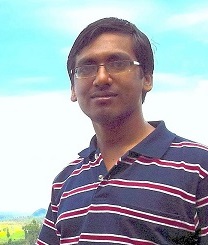
B.Tech. in Electronics and Electrincal Communication, IIT Kharagpur, India, 2013.
Ph.D., Electrical Engineering, Princeton, 2019.
AnokiWave, San Diego, 2019-present.
Papers: Two papers in IEEE JSSC (2020), IEEE T-MTT(2020), IEEE JSSC (2018), IEEE JSSC (2017), IEEE TCAS-I (2017), Three papers in IEEE IMS (2020), IEEE ISSCC (2020), IEEE VLSI (2019), IEEE RFIC (2017), IEEE IMS (2017), IEEE ISSCC (2016), IEEE CICC (2015)
Patents: US Patent filed on load-modulated balanced mm-Wave PA and reconfigurable transceiver and antenna interfaces.
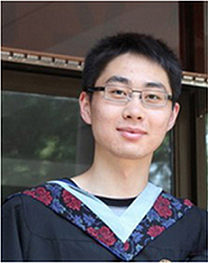
B.S. in Physics, Peking University, China, 2012.
Apple, Cupertino, 2018-present.
Papers: ACS Photonics (Editor's Choice) (2018), Biomedical Optics Express (2018), IEEE JSSC (2018), IEEE JSSC (2017), IEEE IMS (2019), Two papers in IEEE ISSCC (2017), CLEO (2017), (Invited) IEEE MWSCAS (2017), IEEE VLSI (2015).
Patents: US Patent granted on nanophotonic structures in CMOS.
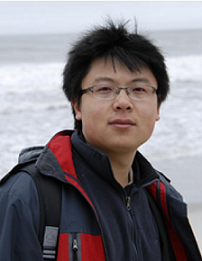
B.S. in Electrical Engineering, Tsinghua University, China, 2012.
Ph.D., Electrical Engineering, Princeton, 2019.
Qualcomm, San Diego, 2018-present.
Papers: Nature Electronics (2018), Nature Comm. (2019), Two papers in IEEE JSSC (2020), Optics Exprss (2018), IEEE JSSC (2017), (Invited ISSCC issue) IEEE JSSC (2016), (Invited) ACM NanoCom (2020), IEEE CICC (2019), Two papers in IEEE IMS (2018), SPIE (2018), CLEO (2017), IEEE ISSCC (2016), IEEE CICC (2015), IEEE IMS (2015)
Patents: US Patent filed on reconfigurable transceiver and antenna interfaces.
Undergraduate Students
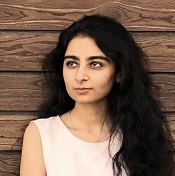
B.S.E. in ECE, Princeton University, 2022.
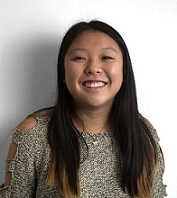
B.S.E. in ECE, Princeton University, 2022.

B.S.E. in EE, Princeton University, 2019.
Awards: Jaskowski Award , Optical Engineering Prize .

B.S.E. in EE, Princeton University, 2019.
Awards: Sigma Xi Award for Senior Thesis Research (2019)
Papers: Advanced Science (2022), cover article.

B.S.E. in EE, Princeton University, 2019.
Awards: IEEE Microwave Theory and Techniques Undergraduate Fellowship, Princeton School of Engineering Best Senior Thesis Award, Bradley Dickinson Award for System Design.
Papers: IEEE Solid-State Circuits Letters (2019), IEEE European Solid-State Circuits Paper (2019).

B.S.E. in EE, Princeton University, 2019.
Awards: Princeton School of Engineering Best Senior Thesis Award, Bradley Dickinson Award for System Design.
Papers: IEEE Solid-State Circuits Letters (2019), IEEE European Solid-State Circuits Paper (2019).
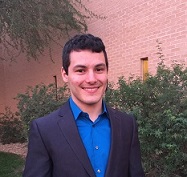
B.S.E. in EE, Princeton University, 2019.
Awards: Princeton School of Engineering Best Senior Thesis Award, Bradley Dickinson Award for System Design.
Papers: IEEE Solid-State Circuits Letters (2019), IEEE European Solid-State Circuits Paper (2019).
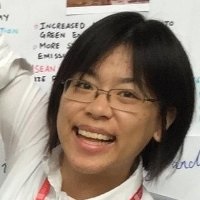
B.S.E. in EE, Princeton University, 2017.
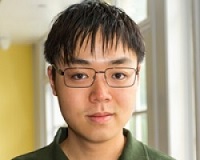
B.S.E. in EE, Princeton University, 2017.

B.S.E. in EE, Princeton University, 2016.

B.S.E. in EE, Princeton University, 2016.
Summer Visiting Students
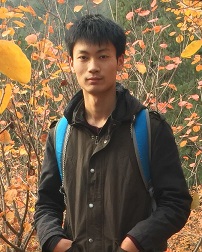
B.S. Electrical Engineering, Peking University, China.

M.S. Physics, California State University, Northridge.

Senior student, South Brunswick High School .

B.S.E. in EE, Cooper Union.
Copyright © 2018 - All Rights Reserved - Domain Name
Template by OS Templates